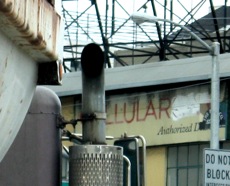On Monday, US energy secretary Steven Chu became the latest high-profile voice against California’s Proposition 23, the statewide initiative to suspend AB 32, the state’s four-year-old climate strategy.
“AB 32 was a good bill and continues to have California in a leadership role in developing clean energy and the efficient use of energy,” Chu told reporters at a dedication in Menlo Park. “From the middle 1970s California played that role and it would just be a terrible setback.”
Last week the trend was given full voice by Mary Nichols, who, as chair of the California Air Resources Board (CARB), is charged with getting AB 32 fully implemented in the next two years, called Prop 23 a “very serious threat,” not just to the core programs of AB 32, but to an array of regulatory programs that support the state’s attack on greenhouse gases.
 “It would bring the part of it that I have anything to do with to a halt, certainly,” Nichols told me in an interview. “Although everybody’s ability to do things that reference climate–that reference GHG emissions–would be threatened as a result of this.”
“It would bring the part of it that I have anything to do with to a halt, certainly,” Nichols told me in an interview. “Although everybody’s ability to do things that reference climate–that reference GHG emissions–would be threatened as a result of this.”
“Absolutely not,” counters Michael Shaw, who directs legislative activities for the National Federation of Independent Business (NFIB) in California. “The measure only deals with AB 32 and does not deal with any of the other (environmental) laws; the Clean Air Act, the CEQA, or the California Water Quality Act. So all those laws will continue to remain in place and provide the protections to the environment that they’ve always done.”
Those specific laws, perhaps (the Clean Air Act, to be sure, as it’s a federal law). But what about the matrix of state regulation that was assembled outside of AB 32 to support greenhouse gas reductions, or measures put in place by executive order, such as the state’s edict to reach 33% renewable energy by 2020?
Steven Maviglio, a spokesman for the campaign against Prop 23, says the language of the ballot measure is wide open for interpretation.
“If the proponents wanted to limit the ballot measure just to regulations adopted ‘pursuant to’ AB 32, it would have been easy to say so, ” Maviglio wrote in a recent email. “But they did not do that, instead they chose to apply the ballot measure to all regulations that ‘implement’ AB 32.”
The “scoping plan” for AB 32–essentially the implementation strategy–draws on numerous other laws and regulations to achieve its emissions goals. Maviglio says the ballot measure “would effectively rip out the central nervous system of the state’s efforts on greenhouse gas reduction/clean energy/etc…which is the mandatory reporting and related programmatic components that are absolutely necessary to have any sort of comprehensive program.”
Last month, in an analysis of all measures set to appear on November’s statewide ballot, the non-partisan Legislative Analyst gave this assessment of the scope of Prop 23:
“This proposition would result in the suspension of a number of measures in the Scoping Plan for which regulations either have been adopted or are proposed for adoption. Specifically, this proposition would likely suspend:
– The proposed cap-and-trade regulation…
– The “low carbon fuel standard” regulation that requires providers of transportation fuel in California (such as refiners and importers) to change the mix of fuels to lower GHG emissions.
– The proposed ARB regulation that is intended to require privately and publicly owned utilities and others who sell electricity to obtain at least 33 percent of their supply from “renewable” sources, such as solar or wind power, by 2020. (The current requirement that 20 percent of the electricity obtained by privately owned utilities come from renewable sources by 2010 would not be suspended by this proposition.)
– The fee to recover state agency costs of administering AB 32.”
But the LAO report went on to say that:
“Many current activities related to addressing climate change and reducing GHG emissions would probably not be suspended by this proposition. That is because certain Scoping Plan regulations implement laws other than AB 32. The regulations that would likely move forward, for example, include:
– New vehicle emission standards for cars and smaller trucks.
– A program to encourage homeowners to install solar panels on their roofs.
– Land-use policies to promote less reliance on vehicle use.
– Building and appliance energy efficiency requirements.”
Shaw insists that “Proposition 23 simply deals with one issue at hand and that is the inappropriate timing of imposing new energy and other related taxes on Californians at a time when our economy can’t bear that.”
The full text of Prop 23 is available as a PDF download from the website of the California Secretary of State.
